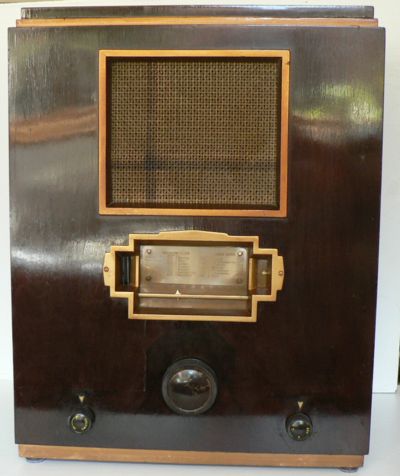
Serial number 61991

Cossor AC Superhet UK 1935 I acquired this sorry looking wireless set (see below).The loudspeaker had come adrift and broken the rectifier valve and the worm eaten wooden cabinet had housed a family of mice and a wasp nest.
This is one of three radios given to me by Mrs Vollmer, a friend of Mrs Nightingale the lady who gave me six other radios which belonged to her late husband. As can be seen they were all in a very sorry state and were destined for the tip.
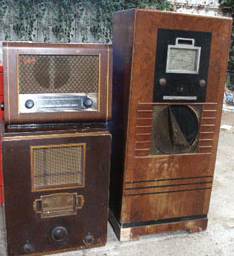
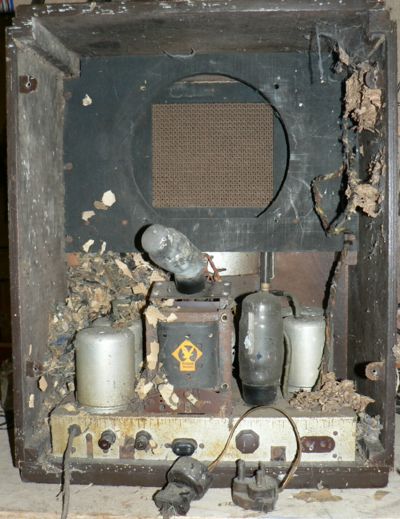
Before cleaning and repair
I have been unable to find any information on this radio but it has
some features of the model 364 and some of the model 535. The valve
lineup would have been 41MPG, MVS/Pen, DDT, XP4, 442BU and 3180 neon
tuning indicator. The set was fitted with equivalent valves from
various manufacturers as follows MX40, MVS/Pen, TDD4, PX4, IW4/350.The
loudspeaker, field coil and its
transformer appeared to be OK as did the mains transformer. The
shredded paper from the mouse nest appeared to be more than 40 years
old so I guessed that all that might have been wrong originally was
that the speaker had sheared its fixing rivets and smashed the
rectifier.
I was intrigued to have a set with a directly heated triode output
stage and one with such a popular pedigree see www.px4.org/ so decided that it would
be a worthwhile challenge to get it working.
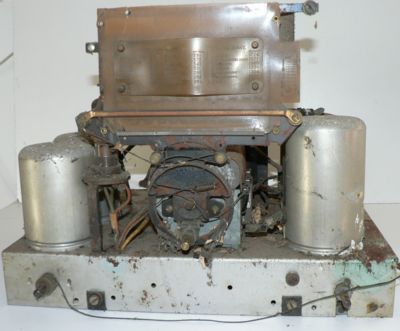
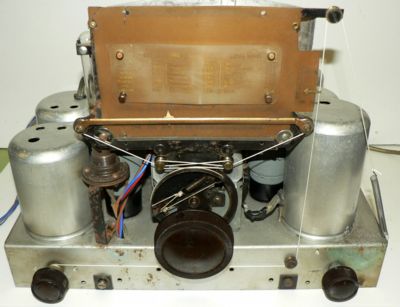
Views of chassis before and after cleaning and restringing dial mechanisms
The first job was to remove the detritus left by its past inhabitants, remove the chassis and treat the cabinet with woodworm killer. After removing the valves and washing them I removed the grime and rust from the chassis. The steel chassis was covered with a thin coating of silver coloured paste (used for renovating picture frames) applied with an old toothbrush and a piece of cloth. In UK this is called 'Goldfinger' and manufactured by Rowney.
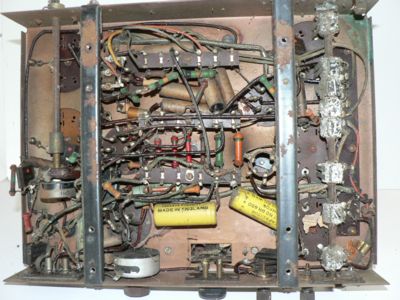
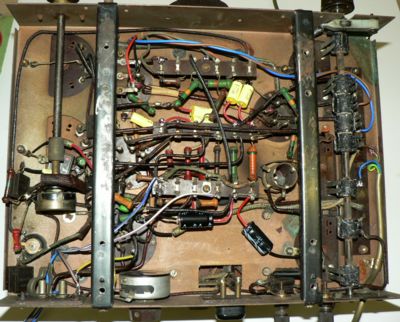
Views of underside before and after replacing capacitors
The cylindrical barrels on the wave change switch were distorted and
covered in a white powder which seems to have been caused by moisture
reacting withe the insulating material. Washing, scrubbing, filing,
gluing and lubricating got the switch operating reliably. The yellow
non-original electrolytic capacitors and the low voltage electrolytics
were found to be virtually short circuit and were replaced. Application
of an external 120volt DC supply revealed that many of the paper
capacitors were leaky so these were replaced as well. The small
variable resistor associated with the neon indicator was open circuit
at one end so this was rewired to utilise the opposite end and the
track on the volume control was cleaned. A new mains cable (with earth
connection) was fitted and the wires to the speaker and field coil were
replaced.
The three gang variable capacitor was covered with a rusty steel cover.
To remove and clean this I had to dismount the capacitor. In doing so I
found that in several positions the vanes touched and needed some
careful tweaking (the fixed and moving vanes are die cast). When
reassembling the dial drive it is necessary to ensure the that the
vanes do not fully mesh or else they will short against the fixed ones!
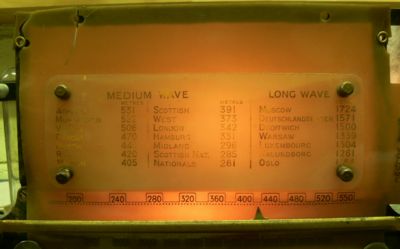
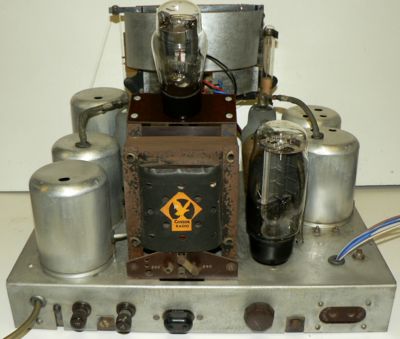
Close up of dial and rear view of chassis
Here we see the dial which over the years has shrunk and caused the
removable station indicator to buckle. I managed to improve the
situation using very hot water and a heavy weight and then elongating
the holes through which the four brass fixing screws pass. Behind the
dial are three separately illuminated compartments (6V 0.3A) which can
be seen in the second picture above.
Nothing went bang when I energised the set without the rectifier in
place, all the valves lit up so I inserted the rectifier and slowly
brought up the voltage using a variable voltage transformer and 'lo and
behold' at about 190 volt I hear music! At full voltage the set works
both on long wave and medium wave, it has been worth the effort. At the
moment the neon indicator does not seem to function.
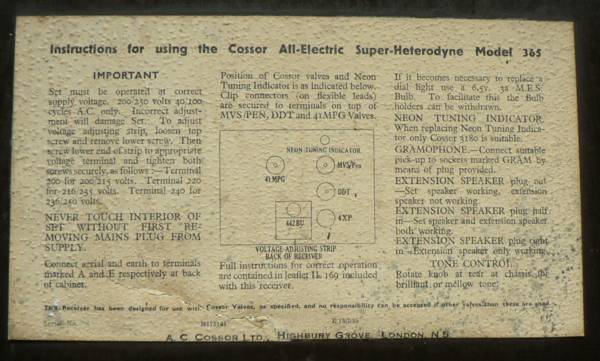
Instructions on rear of cabinet (dated15/7/35)
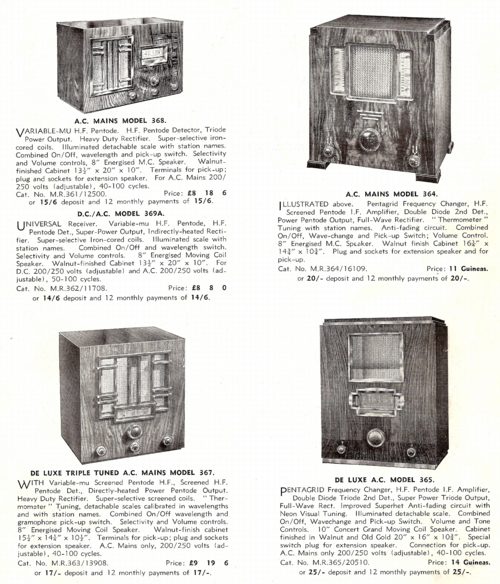
A page from a trade catalogue of 1934.
If you want to know more about Cossor radios look at this great
site:
http://www.cossor.co.uk/home

